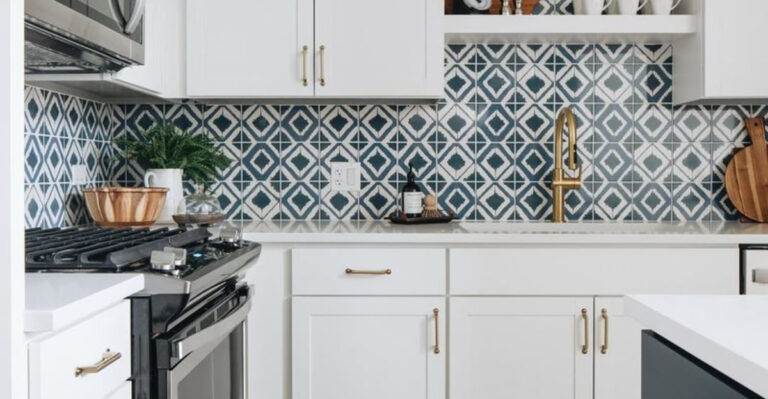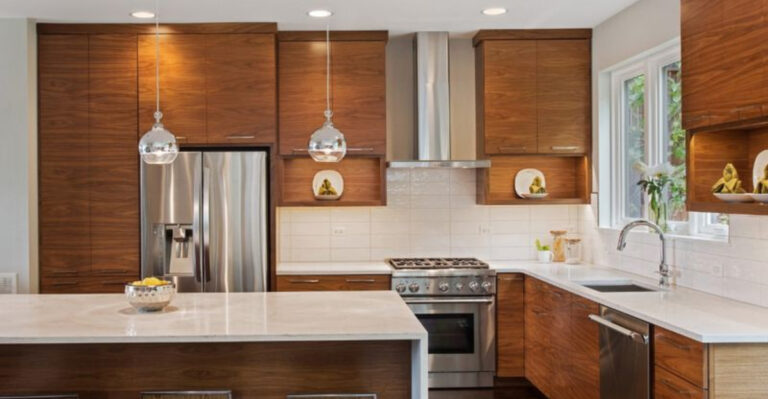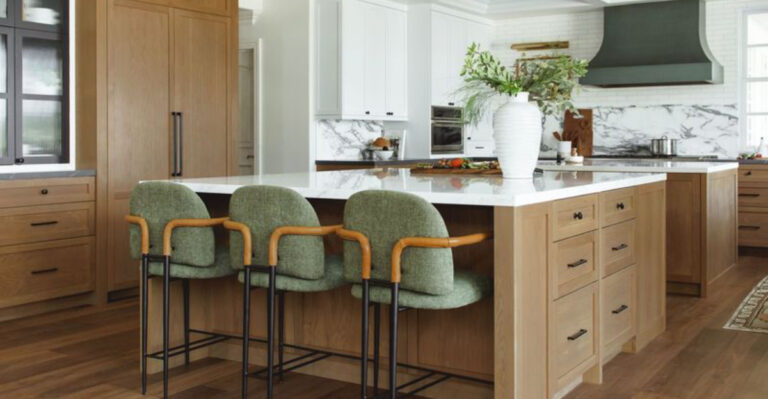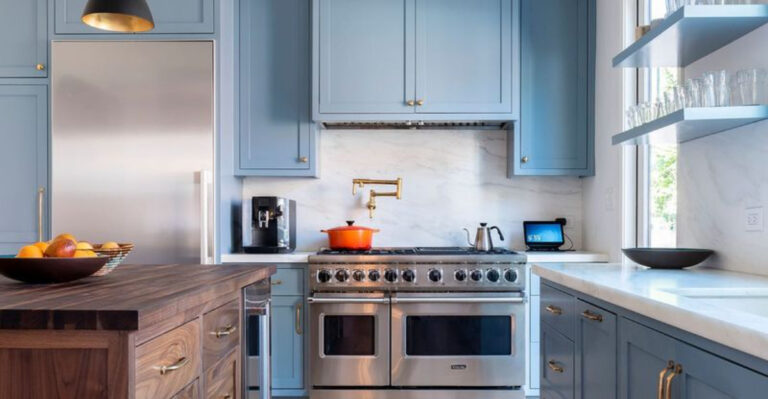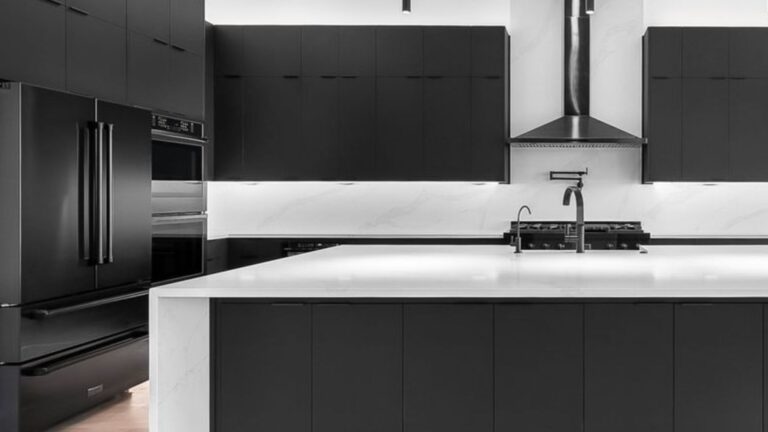10 Simple Storage Additions For Cluttered Kitchen Countertops (Plus 7 Things To Avoid Doing)
Kitchen countertops in my house have always been clutter magnets, appliances, utensils, and random things piling up faster than I can shout, Where’s my coffee maker? It felt like chaos every day.
But here’s the good news: with some simple storage hacks, I turned those messy counters into organized, functional spaces that actually work for me.
Whether your kitchen is a tiny apartment setup or a sprawling culinary dream, these practical tips helped me reclaim my workspace and keep it tidy. If you’re ready to clear the clutter and love your kitchen again, I’m excited to share what worked!
1. Magnetic Spice Racks Save Space And Time

Spices scattered across your counter create unnecessary chaos. Magnetic spice containers stick directly to your refrigerator side, freeing up valuable workspace instantly.
These clever containers let you see every spice at a glance. No more digging through cluttered cabinets or knocking over bottles while cooking.
Installation takes minutes, and the uniform look creates a surprisingly professional appearance. Your cooking efficiency improves dramatically when seasonings stay within arm’s reach.
2. Under-Cabinet Hooks Keep Utensils Handy
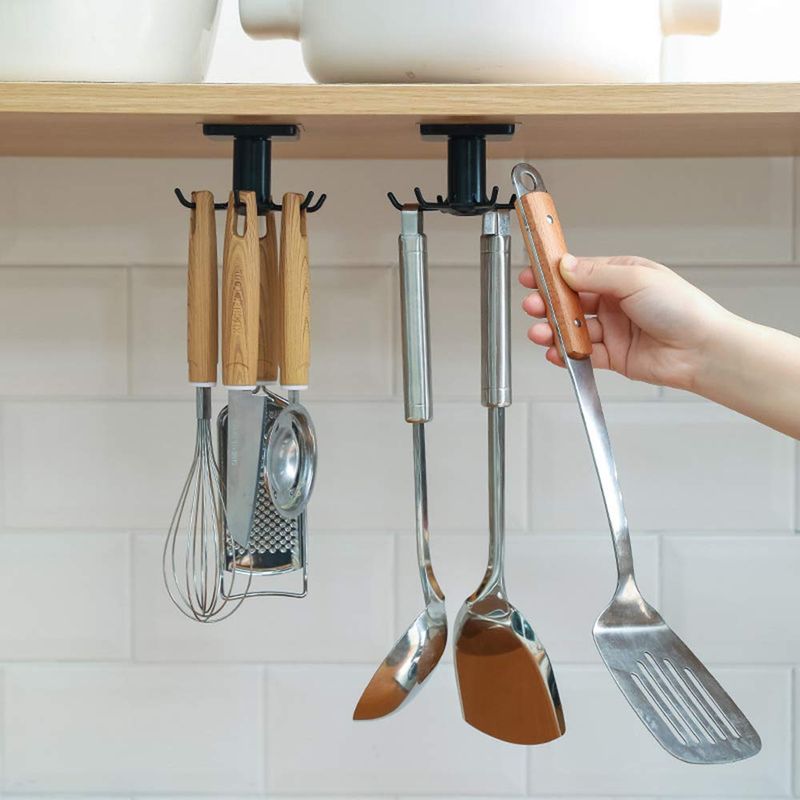
Cooking utensils sprawled across counters make meal prep frustrating. Under-cabinet hooks provide instant storage without taking up any counter space whatsoever.
Installation requires only adhesive strips or small screws. Hang everything from spatulas to measuring cups right where you need them most.
This solution works particularly well near the stove area. Quick access to tools speeds up cooking while maintaining a clean, uncluttered appearance throughout your kitchen.
3. Tiered Shelf Organizers Maximize Vertical Space
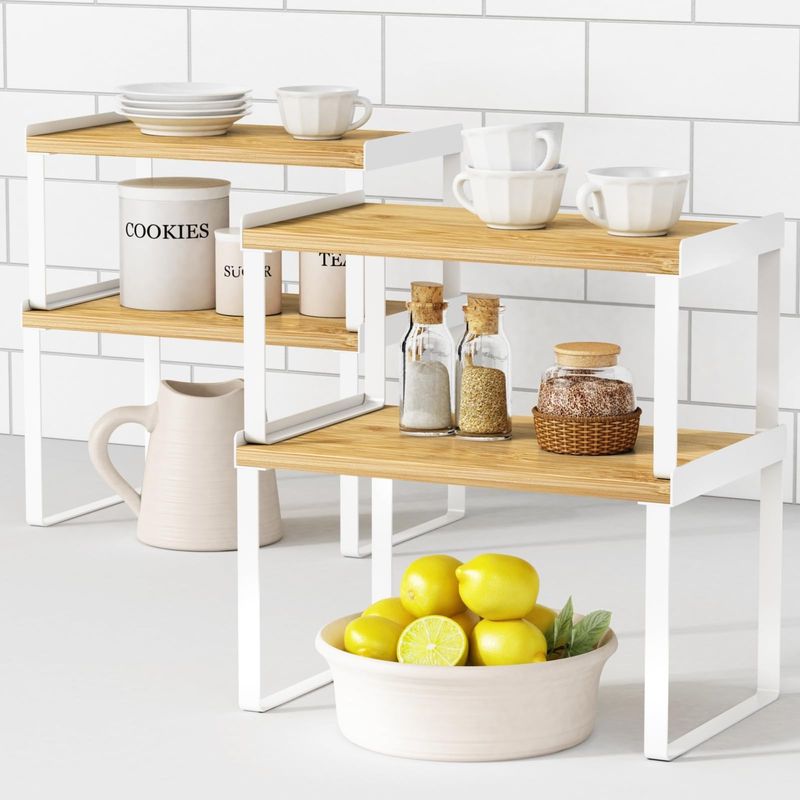
Flat surfaces encourage horizontal spreading of items. Tiered organizers force you to think vertically, instantly doubling or tripling your usable storage area.
These stepped platforms work perfectly for canned goods, condiments, or small appliances. Everything remains visible and easily accessible despite the compact footprint.
Choose bamboo or acrylic versions that complement your kitchen’s style. The investment pays off immediately through improved organization and reduced counter clutter.
4. Rolling Carts Provide Mobile Storage Solutions
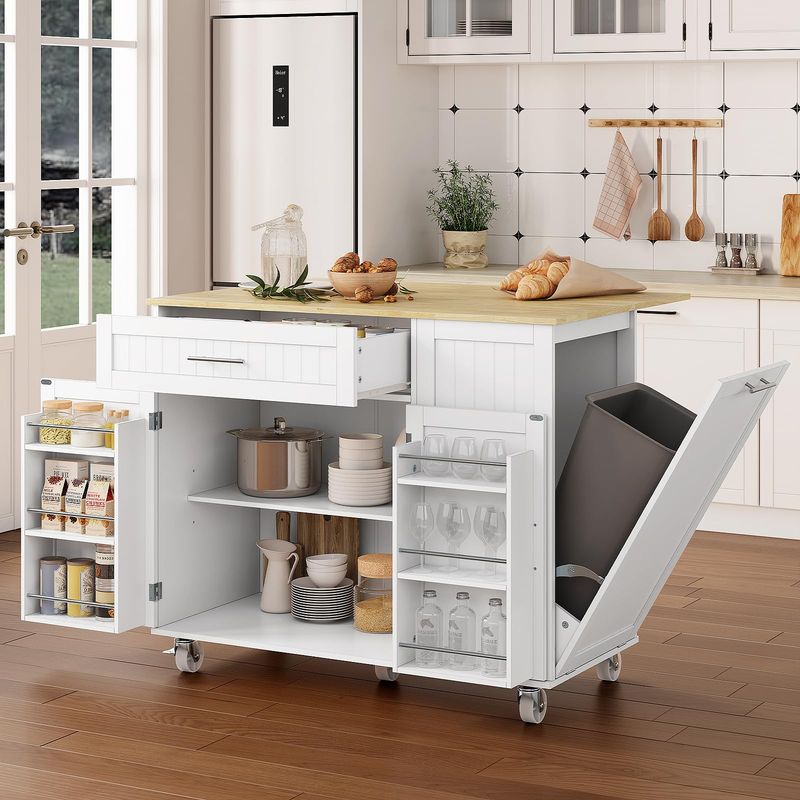
Sometimes you need storage that moves with your cooking rhythm. Rolling carts slide between appliances and tuck into corners when not needed.
Load them with frequently used items like oils, vinegars, or baking supplies. The mobility factor means you can bring ingredients directly to your workspace.
Look for carts with multiple levels and locking wheels. This prevents unwanted rolling while providing stable storage for heavier items like stand mixers or food processors.
5. Drawer Dividers Tame Junk Drawer Chaos
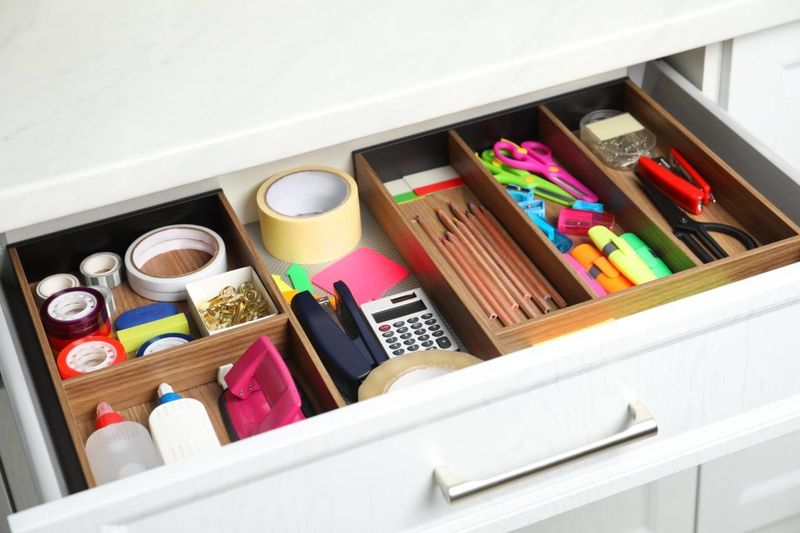
Junk drawers become black holes where useful items disappear forever. Adjustable dividers transform these spaces into organized storage compartments.
Separate batteries from rubber bands, pens from twist ties. Everything gets its own designated spot, making retrieval quick and painless.
Expandable dividers adapt to different drawer sizes perfectly. This flexibility means you can reorganize sections as your storage needs change over time.
6. Lazy Susans Make Corner Spaces Functional

Corner cabinets often become storage graveyards where items get lost. Lazy Susans bring everything within easy reach with a simple spin.
These rotating platforms work brilliantly for oils, condiments, or cleaning supplies. No more crawling into cabinets to retrieve items from the back.
Choose models with raised edges to prevent items from sliding off. The smooth rotation mechanism should handle weight without wobbling or sticking during use.
7. Over-The-Sink Cutting Boards Expand Workspace

Limited counter space makes food prep challenging in smaller kitchens. Over-the-sink cutting boards create instant additional workspace without permanent installation.
These boards extend across your sink, providing a stable cutting surface. When finished, simply lift them away for easy cleaning and storage.
Look for boards with non-slip grips and adequate thickness. The temporary nature means you can remove them when washing dishes or preparing large meals.
8. Appliance Garages Hide Bulky Electronics
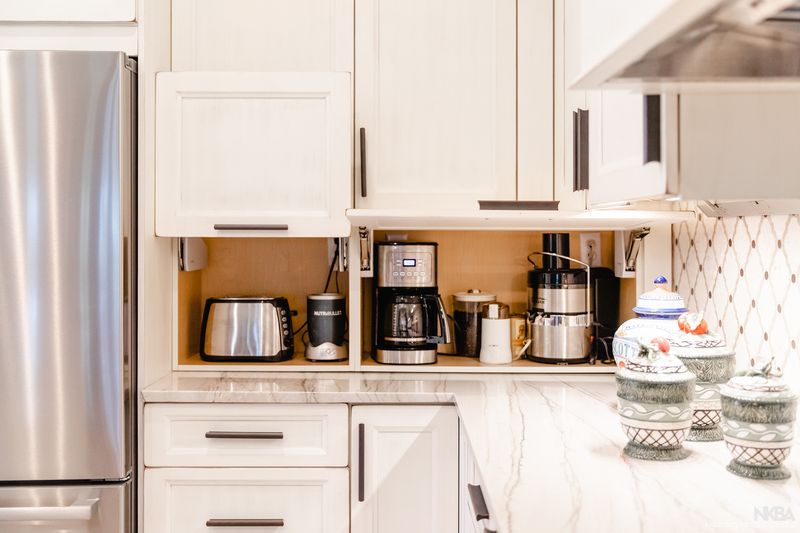
Blenders, toasters, and coffee makers dominate counter space even when not in use. Appliance garages provide dedicated storage while keeping items easily accessible.
These enclosed spaces can be built into existing cabinetry or added as standalone units. Roll-up doors or sliding panels keep appliances dust-free yet convenient.
Consider adding electrical outlets inside the garage space. This allows you to keep appliances plugged in and ready for immediate use without cord clutter.
9. Hanging Fruit Baskets Free Up Counter Real Estate
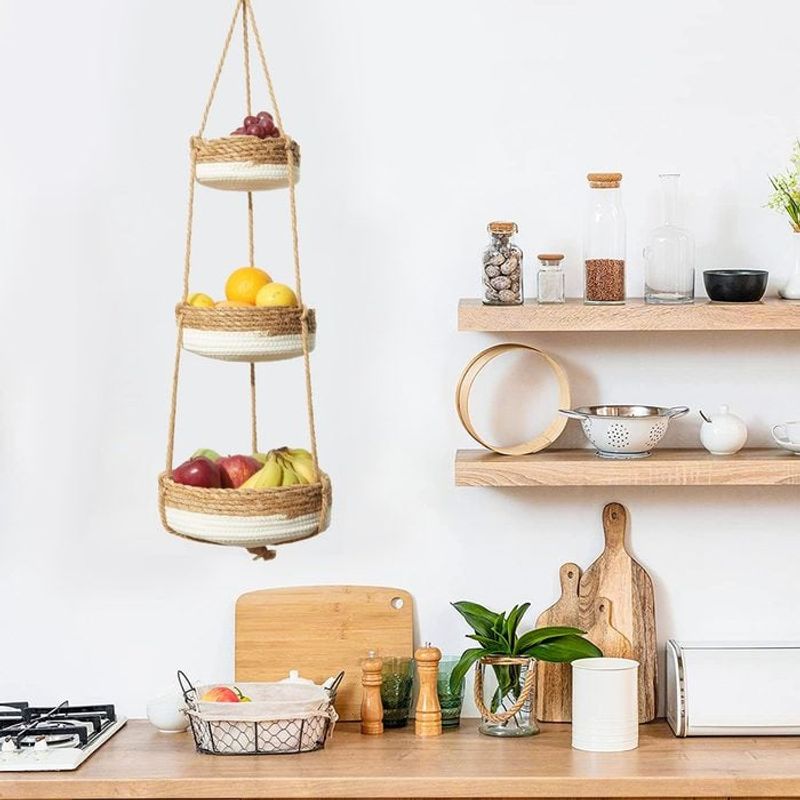
Fruit bowls consume valuable counter space while often allowing produce to go bad. Hanging baskets keep fruit visible and accessible while freeing up workspace.
Tiered hanging systems work particularly well for different types of produce. Bananas hang separately while apples and oranges get their own levels.
Choose baskets with good ventilation to prevent moisture buildup. The elevated storage also keeps fruit away from curious pets or small children.
10. Magnetic Knife Strips Replace Bulky Blocks

Traditional knife blocks occupy significant counter space while limiting your knife collection. Magnetic strips mount on walls, keeping blades secure and visible.
The magnetic hold keeps knives safely in place without dulling edges. Each blade gets proper air circulation, preventing moisture buildup and rust.
Installation requires only wall anchors and screws. Position strips at comfortable heights for safe access while keeping sharp edges away from children.
11. Avoid Overcrowding Small Appliances Together
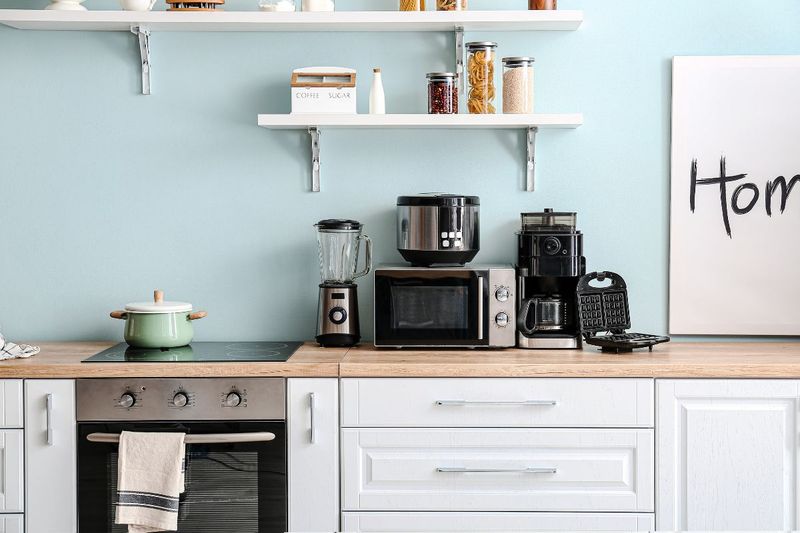
Clustering every appliance in one corner creates visual chaos and functional problems. Spread appliances across different areas based on their actual usage patterns.
Coffee makers belong near the sink for easy water access. Toasters work better near the refrigerator where you store bread and spreads.
This distribution prevents overcrowding while improving workflow efficiency. Each appliance gets adequate ventilation space, preventing overheating and extending their operational lifespan significantly.
12. Avoid Storing Items You Never Actually Use

Specialty gadgets often promise to revolutionize cooking but end up gathering dust. That spiralizer you used twice doesn’t deserve permanent counter space.
Honestly assess which items you reach for regularly versus those collecting dust. Donate or store rarely used gadgets in less accessible locations.
Keep only appliances and tools you use at least weekly. This simple rule prevents accumulation of trendy gadgets that seemed essential but proved unnecessary.
13. Avoid Leaving Dirty Dishes On Counters
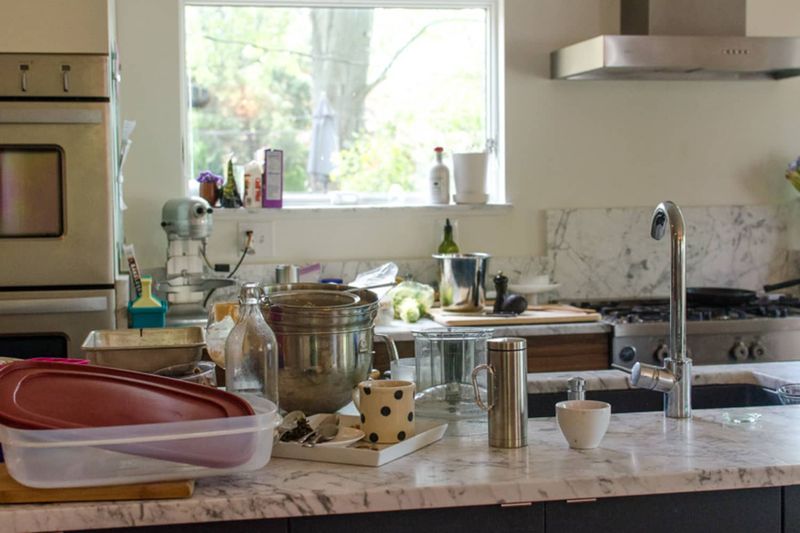
Dirty dishes multiply faster than rabbits when left on counters. One plate becomes a stack, then suddenly your entire workspace disappears under mess.
Establish a strict policy of washing or loading dishes immediately after use. This prevents accumulation and maintains usable counter space for actual cooking.
If washing isn’t possible immediately, designate one specific area for dirty items. This containment strategy prevents the spread of clutter across your entire kitchen workspace.
14. Avoid Using Counters As Permanent Mail Stations
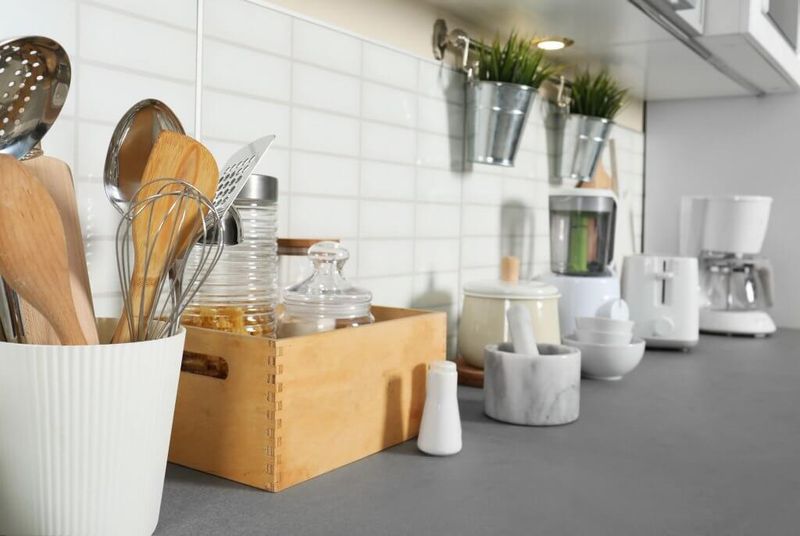
Mail, keys, and paperwork naturally gravitate toward kitchen counters. However, these surfaces should remain dedicated to food preparation and cooking activities only.
Create designated spots elsewhere for mail sorting and key storage. A small table near the entrance works much better than valuable counter space.
Kitchen counters near food preparation areas can harbor bacteria when contaminated with non-food items. Maintaining separation ensures better hygiene and organizational efficiency throughout your home.
15. Avoid Storing Cleaning Supplies Near Food Areas
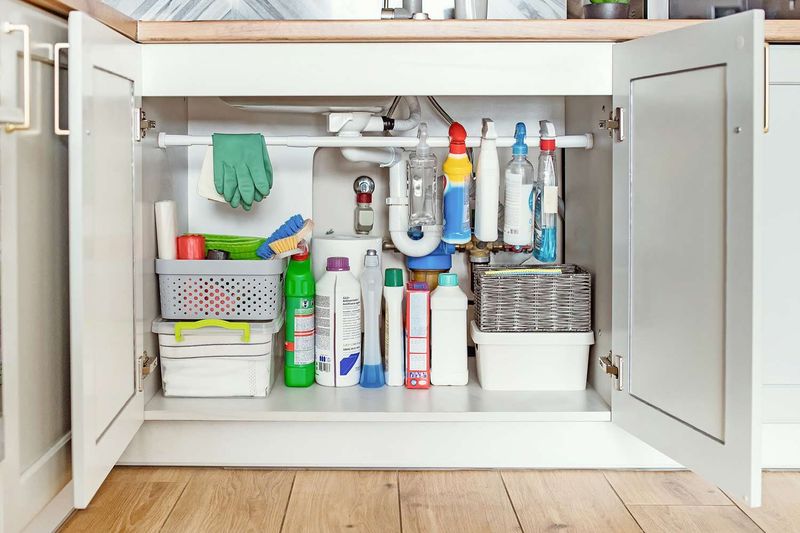
Cleaning products and food preparation don’t mix well from safety and contamination perspectives. Many people mistakenly store these items together for convenience.
Chemical residues can transfer to food surfaces even from closed containers. Cross-contamination risks increase significantly when cleaning supplies share space with cooking areas.
Designate separate storage areas for cleaning products, preferably in utility closets or under-sink cabinets. This separation protects your family’s health while maintaining proper organization standards.
16. Avoid Blocking Access To Frequently Used Appliances

Placing decorative items or rarely used gadgets in front of daily-use appliances creates unnecessary frustration. Your coffee maker shouldn’t require moving three items first.
Maintain clear pathways to appliances you use multiple times daily. This includes adequate space for opening doors, accessing controls, and safe operation.
Consider traffic flow patterns when arranging counter items. Frequently used appliances deserve prime real estate, while decorative pieces can occupy less accessible areas without causing problems.
17. Avoid Ignoring Vertical Storage Opportunities
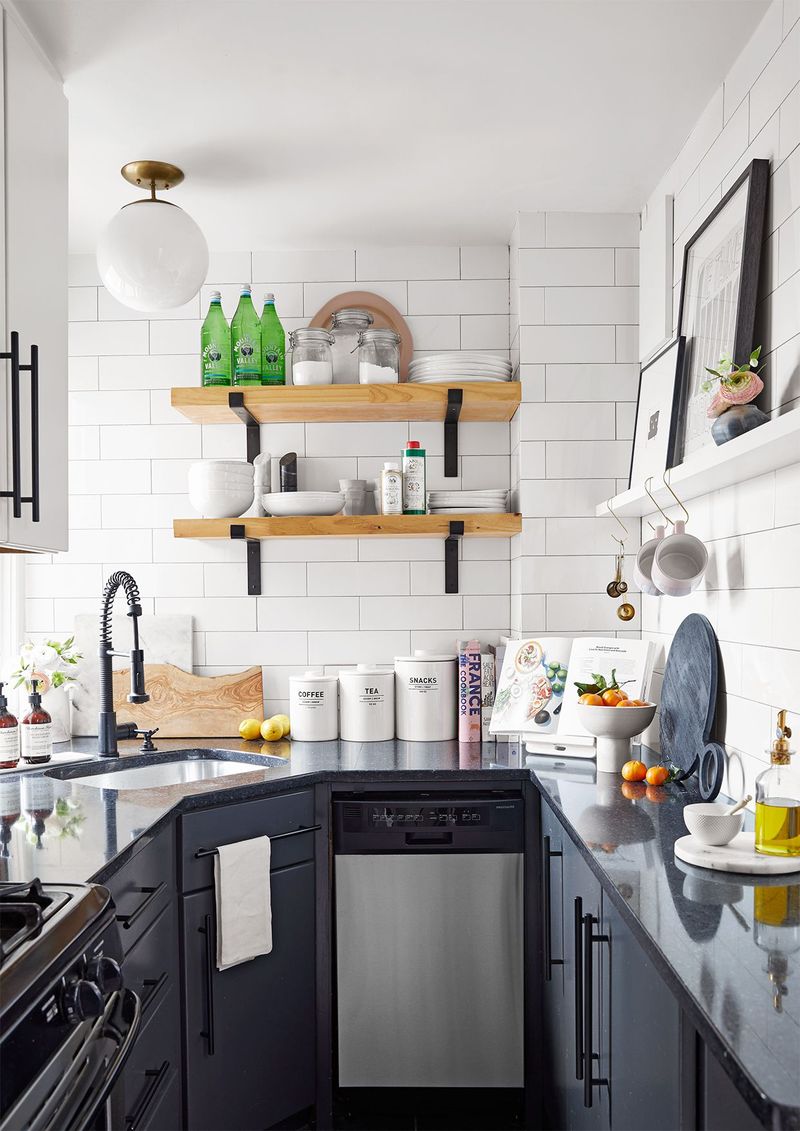
Many people think horizontally when organizing kitchens, missing valuable vertical space. Walls, cabinet sides, and undersides offer tremendous storage potential when utilized properly.
Hooks, magnetic strips, and hanging organizers multiply your storage capacity without claiming additional floor or counter space. These solutions often cost less than major renovations.
Look upward when planning storage solutions. Ceiling-mounted pot racks, wall-mounted spice storage, and cabinet door organizers can transform cramped kitchens into efficient workspaces.


